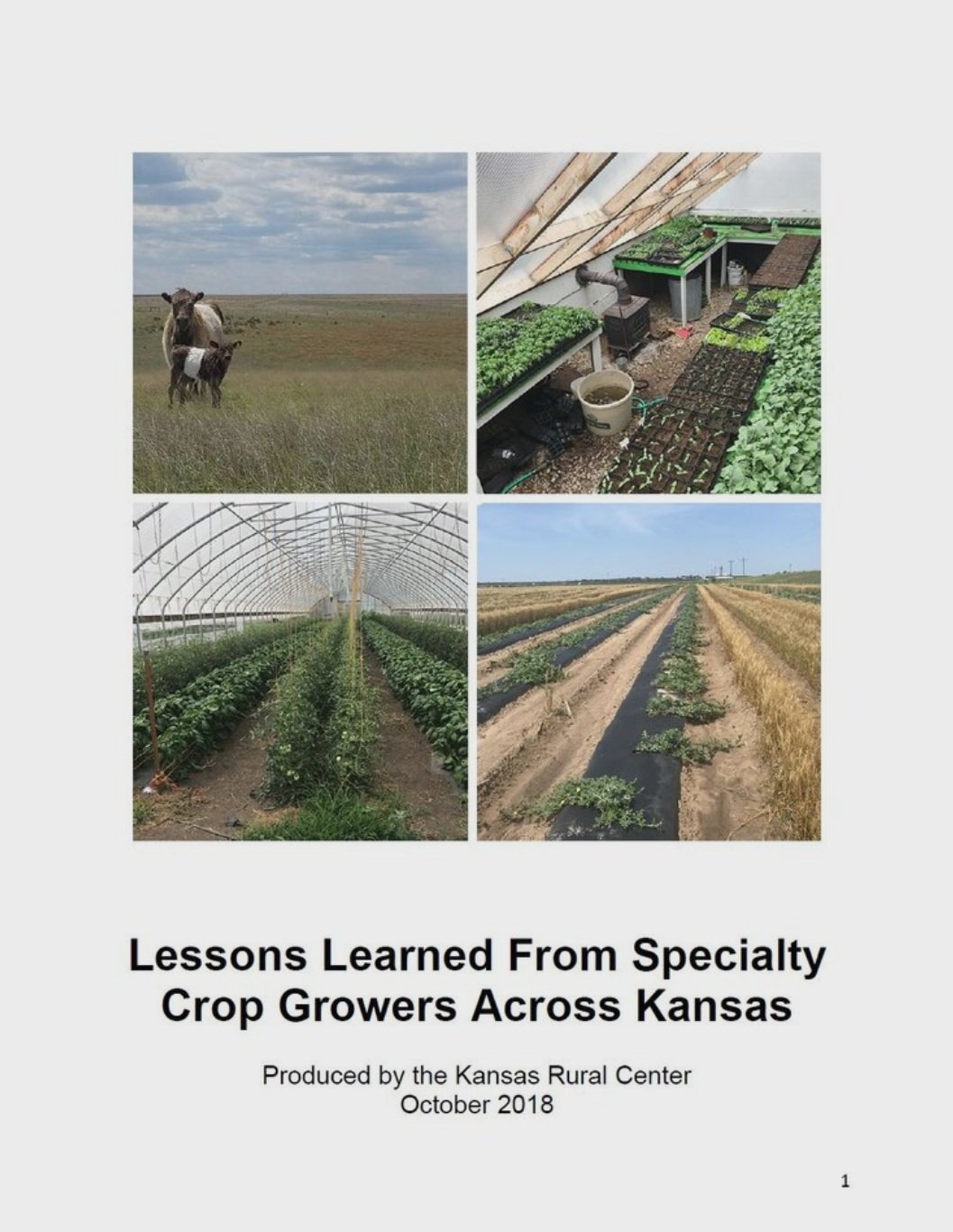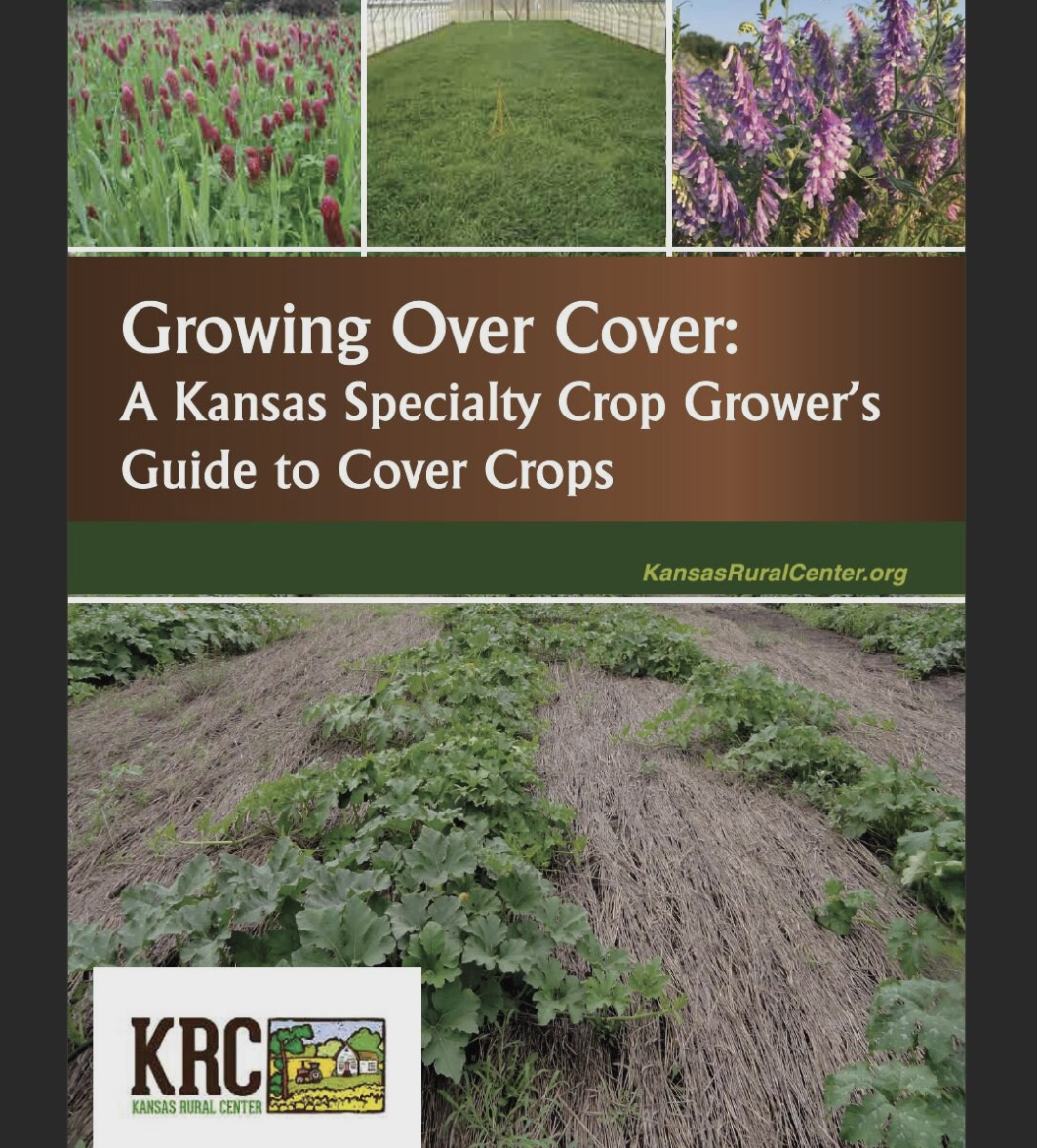KRC’s Growing Under/Over Cover Guides
2018 – Linking Experienced and Beginning Kansas Specialty Crop Farmers to Share Information for Establishing Successful Specialty Crop Enterprises
In the fall of 2017, KRC received funding from the Kansas Department of Agriculture through the USDA Specialty Crop Block Grant program for a project aimed at linking experienced and beginning specialty crop farmers and providing information and networking opportunities to help beginning farmers lower production costs, increase profitability, and create successful specialty crop enterprises in Kansas. The project, which is titled “Linking Experienced and Beginning Kansas Specialty Crop Farmers to Share Information for Establishing Successful Specialty Crop Enterprises Project,” will include five specialty crop workshops during March 2018 that will provide information and education necessary for beginning specialty crop growers to establish a successful specialty crop enterprise in Kansas. The workshops will focus on conservation, production and marketing practices for specialty crop growers, and will provide an excellent opportunity for beginning growers to connect with and learn from experienced growers.
Experienced specialty crop growers and experts from partnering institutions and agencies will provide information on conservation practices and soil health, high tunnel construction and management, cold storage, marketing strategies, and basic economics of specialty crops. Conservation and management practices (such as cover crops, crop rotations, pest and weed management strategies, beneficial insects, etc.) can dramatically impact the bottom line of farms through improving system productivity and profitability. Better understanding of the costs and benefits of these practices and the potential revenues from key vegetables and fruits well-suited to Kansas can help specialty crop farmers succeed.
In addition to providing valuable information education, the workshops will offer beginning farmers the chance to connect with experienced growers to provide for continued access to information and advice.
In addition to the regional workshops, KRC will work with beginning specialty crop growers to pair them with experienced specialty crop growers to facilitate farmer to farmer transfer of knowledge and information. KRC will facilitate a learning circle meeting of ten farmers to determine further educational and resource needs, to share information, and to serve as case study subjects for farm profiles for publication statewide.
Lessons Learned From Specialty Crop Growers
The need for more information and sharing successes spurred KRC to develop the “Linking Experienced and Beginning Kansas Specialty Crop Farmers to Share Information for Establishing Successful Enterprises” Project. In February 2018, KRC hosted a one-day learning circle of five beginning (less than 3 years experience) and five experienced specialty crop farmers to facilitate discussion of challenges, barriers and needs, as well as opportunities identified. The notes and comments from the learning circle plus five farmer profiles are shared in the Lessons Learned report available here.
Growing Over Cover: A Kansas Specialty Crop Growers Guide to Cover Crops
“Cover Crops are not just for grain and livestock farms,” states Jim French, one of the authors. “Adding cover crops to fruit and vegetable operations in home and market gardens to commercial scale operations provides multiple benefits that build soil health and fertility, provide weed control, and attract pollinators and beneficial insects.”
Growing Over Cover: A Kansas Specialty Crop Grower’s Guide to Cover Crops is the latest publication in the Kansas Rural Center’s series of grower guides for fruit and vegetable growers in Kansas. Written by Jim French, Kansas Rural Center, Dr. Cary Rivard, Kim Oxley and Tom Buller, all of Kansas State University Extension, the 32-page guide details soil health principles, and best choices for cover crops for specialty crop operations.
The guide includes planning tips for planting cover crops in Kansas, what cover crops to plant, and establishing and terminating cover crops. Profiles of three successful Kansas specialty crop growers from around the state round out the guide, along with a list of resources (books and articles ) for more information.
Growing Over Cover was prepared with funding from the Kansas Department of Agriculture through the Specialty Crop Grant Program at the U.S. Department of Agriculture (USDA) through Grant No. 16-SC-BGP-KS-044. The guide is the third in a series of specialty crop guides prepared by the Kansas Rural Center in collaboration with Kansas State University Extension.
Growing Under Cover: A Kansas Growers’ Guide
Written by Tom Buller, Kansas Rural Center; Dr. Cary Rivard, Kansas State University, Fruit and Vegetable Extension Specialist; and Kim Oxley, Research Extension Associate, Kansas State University, Growing Under Cover: A Kansas Grower’s Guide provides success stories from Kansas farmers who use tunnels on their farms, additional general management strategies, and specific cropping advice for some of the most successful crops grown in high tunnels in Kansas. A great resource for growers who are looking to start growing in high tunnels, as well as those who already have a high tunnel and are seeking to optimize its use. It will also provide a foundation for growers seeking to understand the basic management practices and needs of various crops within high tunnels.
Growing Under Cover: Guide to Polytunnel Options for Kansas Growers
Polytunnels, such as high or low tunnels, offer growers innovative tools to extend the growing season, help reduce risk, and increase yields, while mitigating extreme and “normal” Kansas weather conditions across all seasons. However, plastic-covered tunnels are no silver-bullet solution. They require significant financial investment, can be labor intensive to manage, and may be damaged or destroyed by extreme weather such as high winds, heavy snow, or hail.
Growing Under Cover: Guide to Polytunnel Options for Kansas Growers, written by Dan Phelps, Kansas Rural Center, reflects input from more than 60 experienced Kansas high tunnel growers who responded to the Kansas Rural Center’s High Tunnel Survey in 2014. This manual offers practical information and resources to assist Kansas growers in avoiding common mistakes and tunnel disaster, in order to maximize their return on investment.






